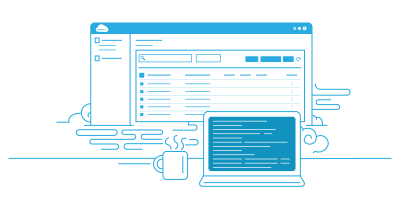Manufacturing excellence requires seamless collaboration between shop floor operations and design teams. While Amazon S3 provides robust file sharing capabilities, proper security configuration is crucial to protect intellectual property and maintain operational efficiency. Let’s explore how to set up secure file sharing that works for both production and design teams.
Establishing S3 Bucket Policies
Start with the principle of least privilege by creating separate buckets for different data types. Your production data should live in a different bucket from design files, ensuring that machine operators only access necessary production documents while design teams maintain control over engineering files.
Here’s a proven bucket organization strategy:
- Production-docs: For current production documentation and work instructions
- Design-files: For CAD files, engineering drawings, and design specifications
- Quality-records: For inspection reports and quality documentation
Implement bucket policies that deny access by default and explicitly grant permissions. Always enable server-side encryption and versioning to protect against accidental deletions and maintain change history.
Role-Based Access Control Implementation
Instead of managing individual user permissions, create IAM roles that align with job functions. This approach simplifies administration and reduces security risks. Essential roles typically include:
- Production Operators: Read-only access to current production documentation and work instructions. They should never have write access to design files.
- Design Engineers: Full access to design files but limited to read-only for production documentation. This ensures they can monitor how their designs are implemented without accidentally modifying production instructions.
- Quality Engineers: Read access to both production and design files, with write access to quality documentation buckets.
- Production Supervisors: Read-write access to production documentation but read-only access to design files.
Managing External Collaborators
Manufacturing often requires temporary access for contractors, vendors, and consultants. Rather than creating permanent IAM users, utilize AWS STS (Security Token Service) to generate temporary credentials. This approach automatically revokes access when projects conclude.
Implement these best practices for external access:
- Create specific IAM roles for each contractor type (e.g., equipment_maintenance, design_consultant)
- Use time-limited credentials with maximum session durations of 12 hours
- Implement mandatory tagging for all external access requests
- Enable CloudTrail logging to monitor file access patterns
Monitoring and Compliance
Deploy automated monitoring using CloudWatch metrics and AWS Config rules to ensure compliance with your security policies. Set up alerts for:
- Unauthorized access attempts
- Changes to bucket policies
- Large-scale file downloads
- Modification of critical production documents
Consider implementing object tagging to classify data sensitivity levels and automate security controls based on these tags.
Setting Up File Sharing for Manufacturing Floor and Design Teams
Effective file sharing between manufacturing and design teams requires careful balance between accessibility and security. Regular security audits and feedback from both teams help refine these configurations over time. Remember that overly restrictive policies can push teams toward unsanctioned file sharing methods, while overly permissive access creates security risks. By implementing these practices, you’ll create a secure yet efficient environment that supports both production needs and design innovation. Monitor usage patterns and gather feedback to continuously refine your approach, ensuring your S3 configuration evolves with your manufacturing operations.



Leave A Comment